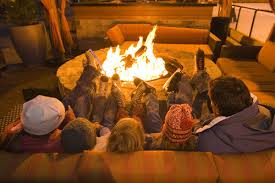
Recent campaign propaganda by UCAIR is attacking the use of wood burning fireplaces and stoves. They claim that 1 fireplace will produce as much pollution as 90 sport utility vehicles. I think that all of us are interested in clean air, blue sky and the ability to breathe easily, but somehow the data and comparisons that are presented seem emotionally charged and perhaps flawed. I know that if given the choice I would much rather stand right next to a campfire (burning wood) than next to the tail pipes of 90 SUV’s - especially on a cold day. Most of the information available on the internet is less than scientific. Most is provided by groups promoting clean air initiatives and legislation and has very little scientific data discussing what happens to the particulates that have been emitted and what nature’s method is for cleaning the air.
Air is a unique commodity. We all share it, it belongs to no one person or group, and virtually everything that we do has some effect on it. Even every breath we take emits something into the air. In a crowded room, a line, or on a bus we’re sharing a lot of the same re-breathed air.
If we focused on air quality alone and wanted to make it virtually pure, we would eliminate all automobiles, all trains using diesel fuel to power their electric motors, airplanes, busses, motorcycles and virtually every form of transportation requiring anything other than human or animal power. We would need to eliminate all manufacturing that required plastics, rubber, or fossil fuels of any kind. We would need to eliminate all aerosols, paints, the spraying of insecticides and fertilizers. We would need to eliminate natural gas, oil, and wood as sources of heat production for our home. We would eliminate nylon carpets for our floors, refrigerants for our freezers, all but leather, cotton and wools for our clothing… and the list would go on. In short we would be living a near “caveman” like existence except - with no fires.
Somewhere there has to be a balance between air quality and the quality of life. On a cold day I am very willing to sit next to a warm fire – managing the risk and discomfort that the smoke brings in order to enjoy the warmth that the fire gives.
We have two options: #1 Live like cavemen (with no fire), or #2 Live wisely allowing some by-product to be created by ourselves and being respectful of others creating some by-product as well. Assuming that option #1 with disease, severe discomfort, and death is not a rational choice I’ll focus on option #2 of Live wisely. So, “How much pollution, smoke, haze, etc. is livable and appropriate for the time being here in Utah?” The Wasatch Front has a seasonal inversion. Unfortunately it is during the coldest time of the year when people would benefit the most from the supplemental heat of a wood fireplace. To eliminate all of the haze in our situation is virtually unrealistic. It’s a fact of life for living on the Wasatch Front. We all benefit from the oil products that have been refined, from the goods that are delivered daily to our homes, grocery stores, and shopping centers. We appreciate the ability to travel about as we wish and visit friends and family and to attend work. Many of us even appreciate the ability to warm our homes occasionally with a wood burning fire and have an alternate heat source in case of a gas-line or electricity malfunction.
I’m not opposed to the campaigns that educate on all types of pollution causing activities, but to isolate one activity and legislate the use of fireplaces seems to be overly restrictive and inappropriate. What happens next? Do we legislate when we can drive our car and how many passengers need to be transported? The EPA has already created standards that limit the emissions of new fireplaces to 4.1-7.5 g per hour depending on the type of fireplace. The cost of the fireplaces has increased significantly because of the stringent standards. To restrict the use of these fireplaces that have been manufactured to the federal standard is akin to arbitrarily outlawing all vehicles that don’t get at least 25 mpg. even though they’re meeting federal standards as well.
In my opinion the concern with wood burning fireplaces will naturally disappear on its own without our government needing to tighten controls further. As manufacturers compete to create more efficient units to appeal to educated buyers, less efficient units will naturally begin to disappear.
I encourage our legislators and do-gooders to be cautious when such restrictive initiatives are proposed, especially when they affect the more rural northern counties of Weber and Box Elder. Your family might be one of those who is seeking warmth from a neighbor with a wood burning fireplace during a natural disaster.